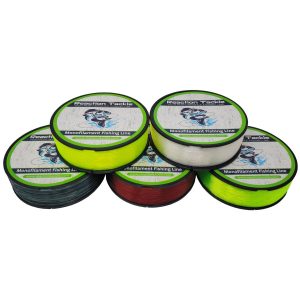When it comes to fishing, one of the most important decisions you’ll make is selecting the right fishing line. While it may seem like a simple choice, picking the right weight test line for your specific fishing needs can significantly impact your success on the water. Whether you’re fishing for bass, trout, or saltwater species, understanding how to match your fishing line to your target fish and environment is key.
What Is Fishing Line Test Weight?
Fishing line test weight refers to the line’s strength and its ability to handle a certain amount of weight before it breaks. It’s usually measured in pounds and represents the weight of fish the line is capable of handling. For example, a 10-pound test line can theoretically handle a fish weighing up to 10 pounds.
Choosing the correct test weight depends on several factors, including the type of fishing you’re doing, the size of the fish you’re targeting, and the environment in which you’ll be fishing.
1. Consider the Species You’re Targeting
One of the most important considerations when choosing a line test is the type of fish you’re trying to catch. The size and strength of the fish should dictate the weight of the line you use. Here’s a breakdown of recommended test weights for different species:
- Panfish (Crappie, Bluegill, etc.): For smaller fish like panfish, you’ll want a lighter line, typically between 2-6 pounds. These fish don’t put up much of a fight, so a thinner line will be sufficient.
- Trout: For trout, a 4-8 pound test line works well, as trout can put up a decent fight, but you don’t need an overly heavy line.
- Bass (Largemouth & Smallmouth): For bass fishing, a 10-20 pound test line is commonly used. Largemouth and smallmouth bass can grow quite large and strong, so a heavier line is necessary to handle their resistance.
- Saltwater Species (Redfish, Snook, etc.): For saltwater fishing, the line needs to be stronger to handle the powerful fish and the harsh conditions. A 15-30 pound test line is ideal for many saltwater species.
2. Match the Line to Your Fishing Technique
The type of fishing technique you’re using also plays a role in choosing the right test line. For example:
- Fly Fishing: Fly fishing requires a different kind of line. Fly fishing lines typically have a specific weight to help cast the fly more accurately. These lines are usually measured in grain weights, and the test weight isn’t as important.
- Trolling: Trolling lines need to be strong enough to withstand the drag of the boat, so heavier lines (15-30 pounds) are usually used when trolling for larger species.
- Casting or Jigging: For casting or jigging, the test weight will depend on the species and your casting distance. A medium test line, such as 6-12 pounds, is often suitable for general freshwater fishing.

3. Factors to Consider When Choosing Line Test Weight
While the species and technique are essential, there are a few other factors to consider:
- Water Clarity: In clear water, fish are more likely to see your fishing line. Using a lighter test line or a thinner diameter line can make your presentation more subtle and increase your chances of a bite.
- Structure and Environment: If you’re fishing in areas with dense weeds, rocks, or other structures, you may need a stronger line to avoid getting snagged or breaking the line during the fight. In such cases, a line with a higher test weight (20-50 pounds) may be necessary.
4. Test Line Materials
The material of your fishing line can also affect its strength and performance. The most common materials are:
- Monofilament Line: A popular all-around line, great for beginners. Monofilament is stretchy, which helps absorb shock, making it ideal for a wide range of fishing applications.
- Braided Line: Known for its strength and thin diameter, braided lines are excellent for heavier fish and longer casts. It has little stretch, so you’ll need to be careful with hook sets.
- Fluorocarbon Line: Fluorocarbon is less visible in water, making it an excellent choice for clear water fishing. It’s also abrasion-resistant and sinks faster than other types of line.
Choosing the right weight test line for fishing is a crucial step toward having a successful day on the water. By considering the species, fishing technique, and environmental factors, you’ll be able to pick the perfect line that can handle the fish you’re targeting and maximize your chances of landing a catch.
Image: ebay





